Today a chink appeared in Terry’s armour. I couldn’t believe it. In months spent riding with him and witnessing his super efficiency and meticulous preparations he astonished me by revealing he’d mislaid his Goretex jacket. We looked everywhere, but it was clear it was lost to the highway. Somewhere a rider would be following our path along a road, come across it and be convinced there was a cyclist ahead slowly losing the plot. They wouldn’t be far wrong.
As we left Kountze the humidity was so high it was like riding through the clouds, fleeces gathered a layer of water droplets in seconds. After breakfasting on bran flakes and toast and filling our pockets with supplies of porridge oats for emergencies (we have become experts in purloining hotel supplies like soaps and shampoo) we’d set our wheels towards Honey Island. The name promised exotic temptations, but we found neither honeys nor an island. However if you get your kicks from beer, seed potatoes and deer processing then you should book your tickets right now.
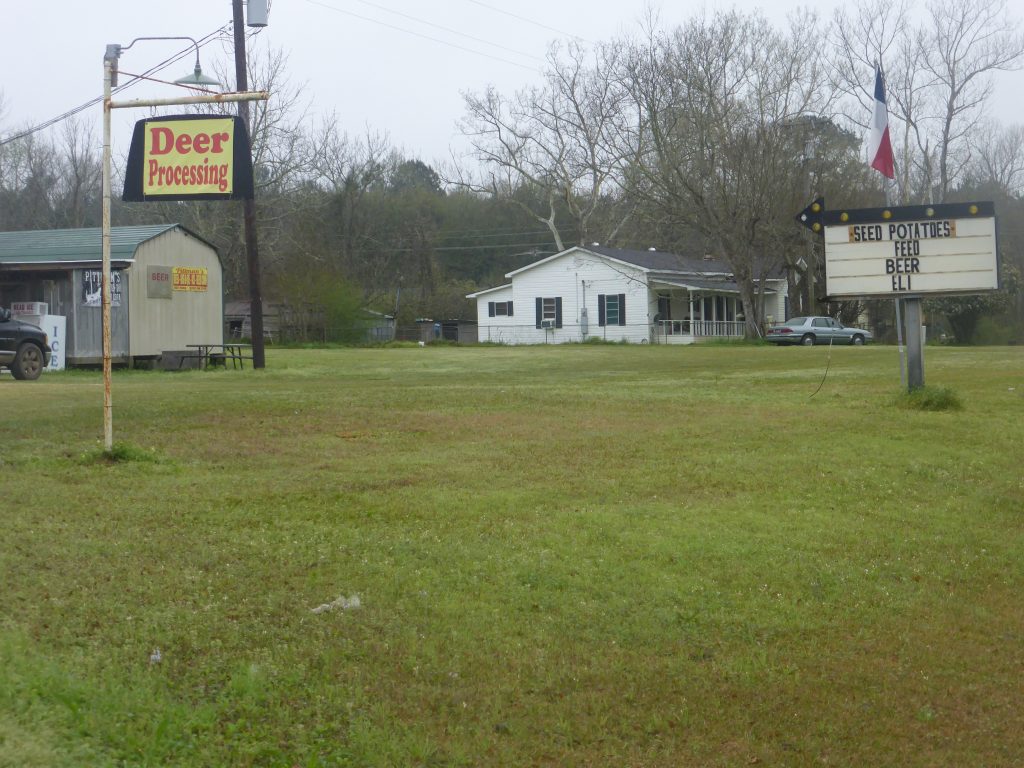
Much of the area we are passing through today is known as the Big Thicket. According to the notes on our Adventure Cycling Association maps the Thicket once covered more than a million acres and ‘there are areas still so thick and brushy with undergrowth as to form a nearly impenetrable jungle’. It has always served as a handy hiding place for outlaws and smugglers and during the Civil War it became a refuge for service-dodging Texans.
At one time it appears the Big Thicket was populated with almost every variety of hardwood and pine native to southern Texas. Much of that has now been depleted, but several large sections including one south of Kountze, remain in their natural state, protected as the Big Thicket National Preserve.

We spent much of today cycling on quiet country roads through a mixture of ranches and plantations. At one point we even passed a field of soft fruits. It’s dangerous to generalise, but Texas already seems cleaner than Mississippi and Louisiana. It may be the posters “Don’t Mess with Texas” or the fact that almost everyone carries guns that solves the littering problem.
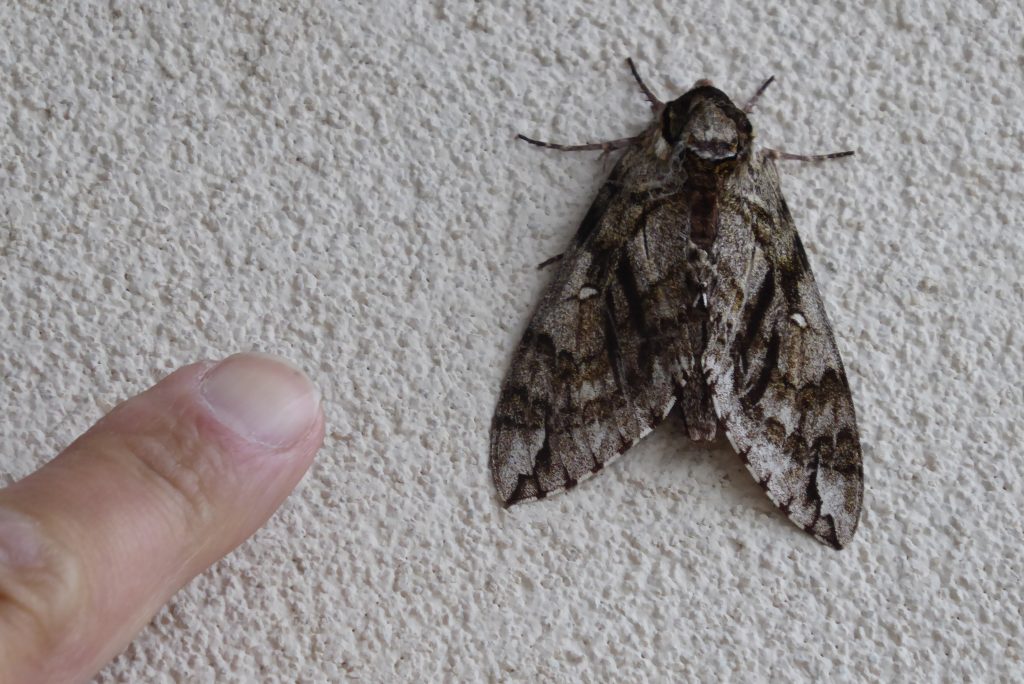
By 11am we’d already covered around 30 miles. Or maybe our average speed was boosted by the numerous dogs that chased us. A few days ago we established that the cheap dog deterrent I’d bought, to replace the Dog Dazer I gave away to a couple of cyclists near the end of the TransAm, was useless. We discovered this by experimenting on a moth. One blast from Terry’s original model and the moth was thrown into confusion, no doubt thinking it was facing multiple incoming bats from all directions. Pressing the button on mine and it continued preening its feelers with not a fear in the world. I couldn’t see any tough Texans using electronic gadgets on dogs when they could buy any weapon known to man.
“Hey buddy – are you carrying a gun?” he called to a man in a peaked baseball cap.
We stopped for coffee in Rye and ended up chatting to a couple on a Harley about guns. Terry recounted his story about Eddie in Merryville sleeping with five loaded pistols next to his bed. “And your point is?” the biker retorted. “Everyone between here and California will be carrying a gun,” he explained, leaving us in no doubt he had a concealed weapon.
“Hey buddy – are you carrying a gun?” he called to a man in a peaked baseball cap sitting at another table, in an effort to further prove his point. Unfortunately it turned out he’d directed his question at the only person between here and California that wasn’t carrying a gun. Apart from Terry and me that is. So there were now three people between us and the west coast who were armless. It felt like our numbers were growing rapidly. Maybe we should start a movement?
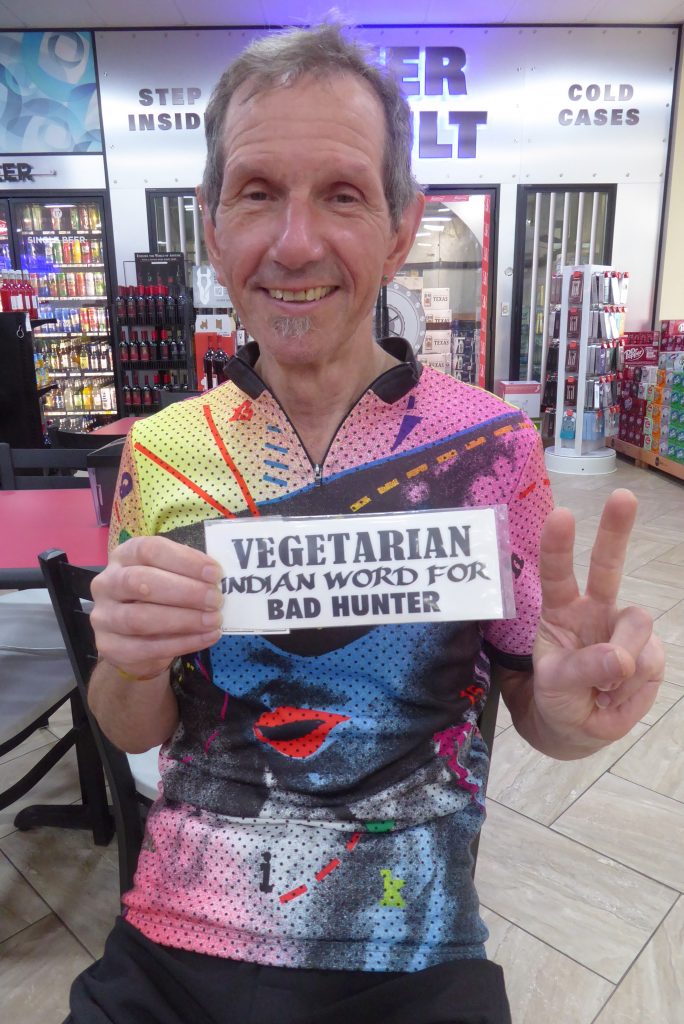
The bikers set off, although the man’s wife on the back looked frozen as she’d forgotten her jacket. I was about to shout out that there was a very nice Gortex jacket on the shoulder a few miles back, but decided to keep quiet. Instead I photographed Terry holding a sticker (there were loads for sale) that read “Vegetarian – Indian word for Bad Hunter”. I’d had my fun – tomorrow the machine that was Terry Wooller would be back.
“He eventually belched past us waving his arms around as if we’d strung a washing line across the road and were airing our smalls”.
When the next dogs took chase I knew I was without an effective deterrent and could only shout a firm “Stand down” at our pursuers, which had intermittent success, while Terry followed up with an electronic blast if the pursuit continued. It amazes me how fast you can pedal when trying to protect your legs, but even this was barely enough to outrun a particularly large hound that took a fancy to us. Hopefully this situation will improve the further we head west, or the dogs will just be too hot to bother.
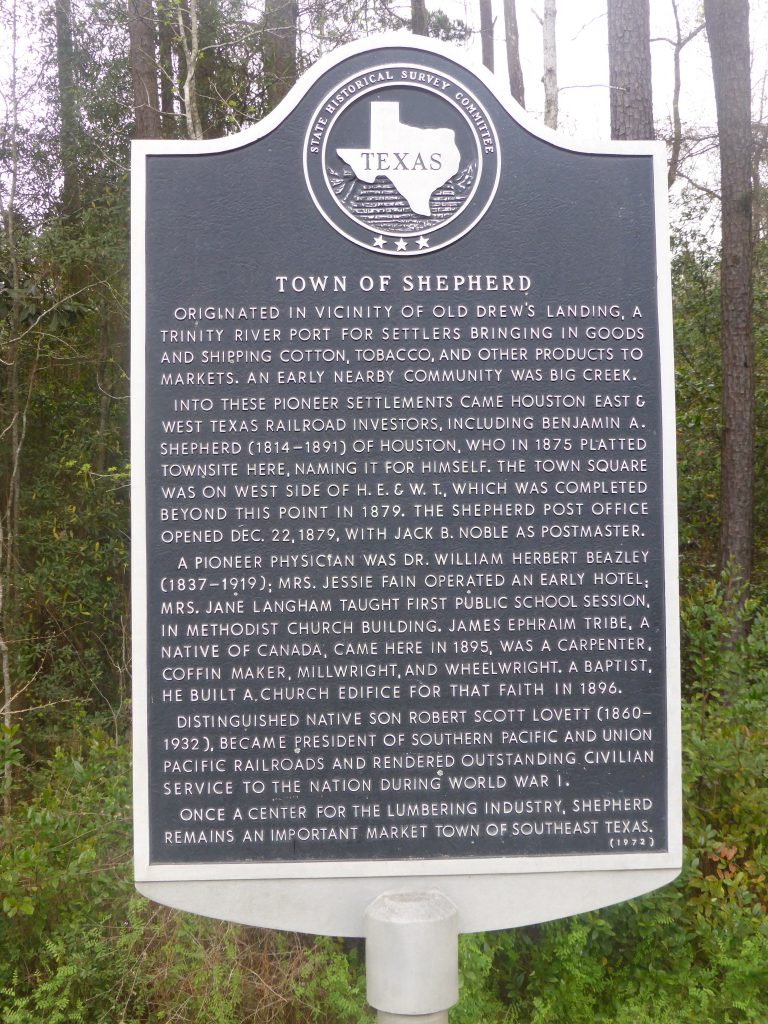
Just outside Dolan we attracted the attention of a rather aggressive pick-up truck driver who, stuck in a line if traffic behind us, was incredulous that his progress was being held up by two cyclists who had the audacity to be using a public road. He proceeded to give ever more increasing blasts on his horn, his frustration mounting with each burst. He eventually belched past us waving his arms around as if we’d strung a washing line across the road and were airing our smalls.
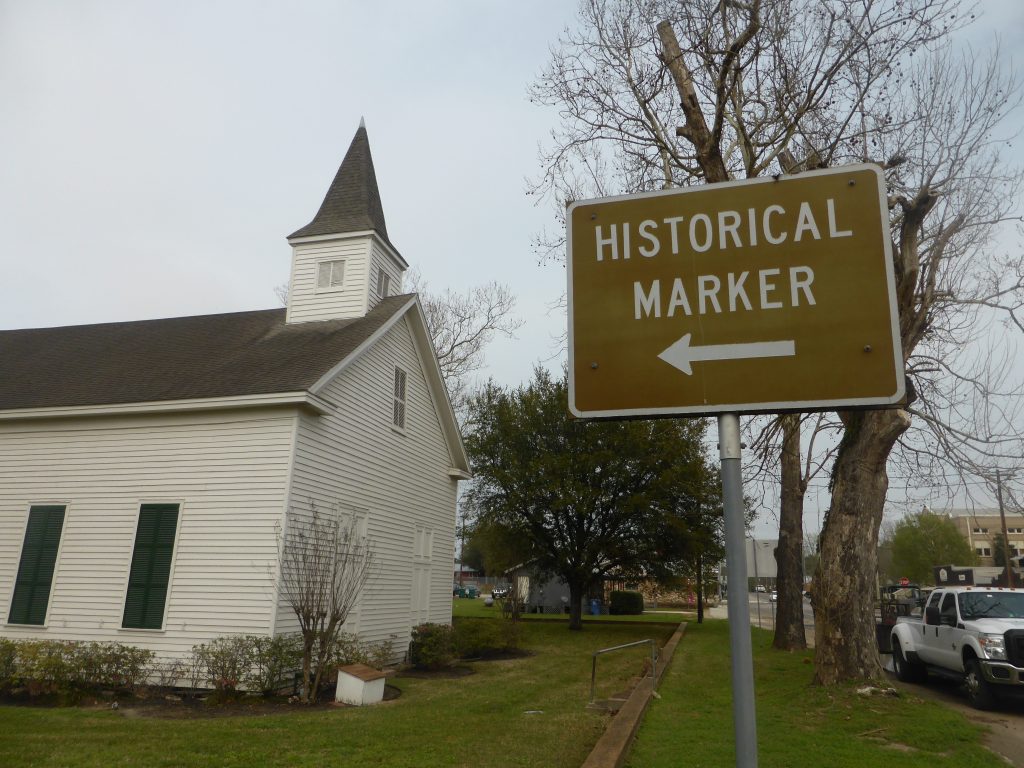
Back home we’d probably have given such an complete tosser the finger. But in Texas even arseholes have guns and we had no evidence our dog dazers would prove effective on rednecks, so we let him continue, no doubt ranting and raving until he reached home, gave his wife a beating and kicked the dog.
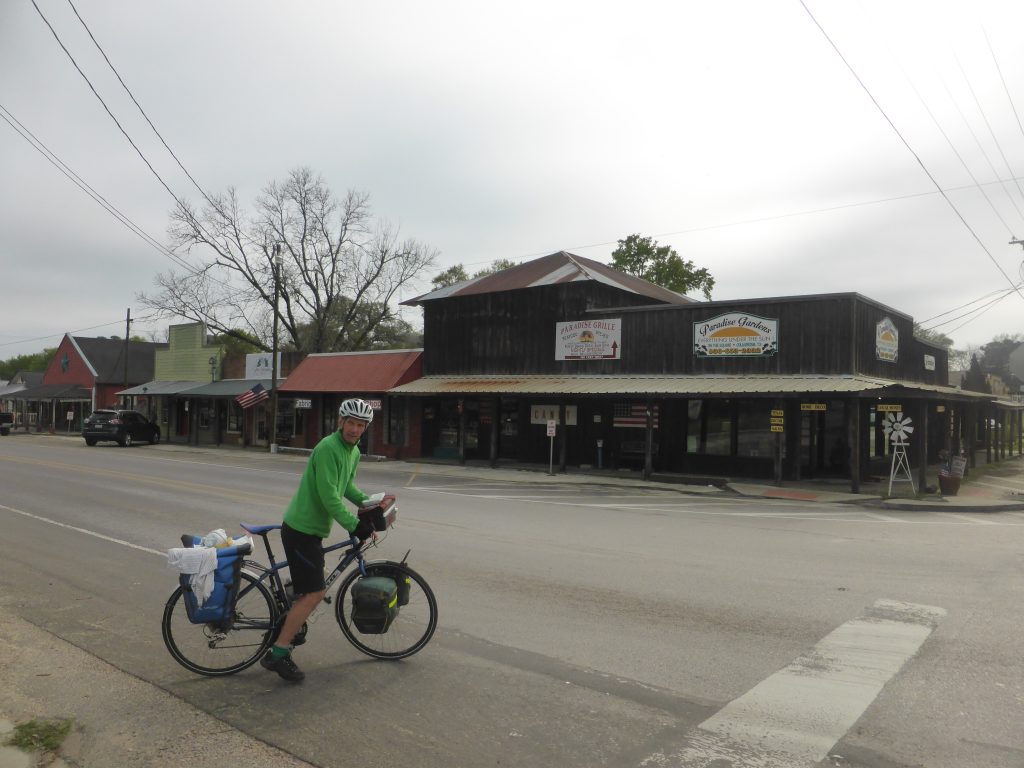

Arriving in Coldspring Terry was still unhappy about losing his jacket. I wondered about whether to give him some advice on how to be more organised, but decided it was best to leave it. Coldsprings was a real surprise – by some quirk of fate it had avoided being subsumed by the neighbouring retail strip and even had a few rows of shops nestled inside historic wooden western style frontages. Even the church had character and there was some evidence of people walking around town. Quite extraordinary. It was just about the only example of a functioning small town we’d seen since leaving the east coast.
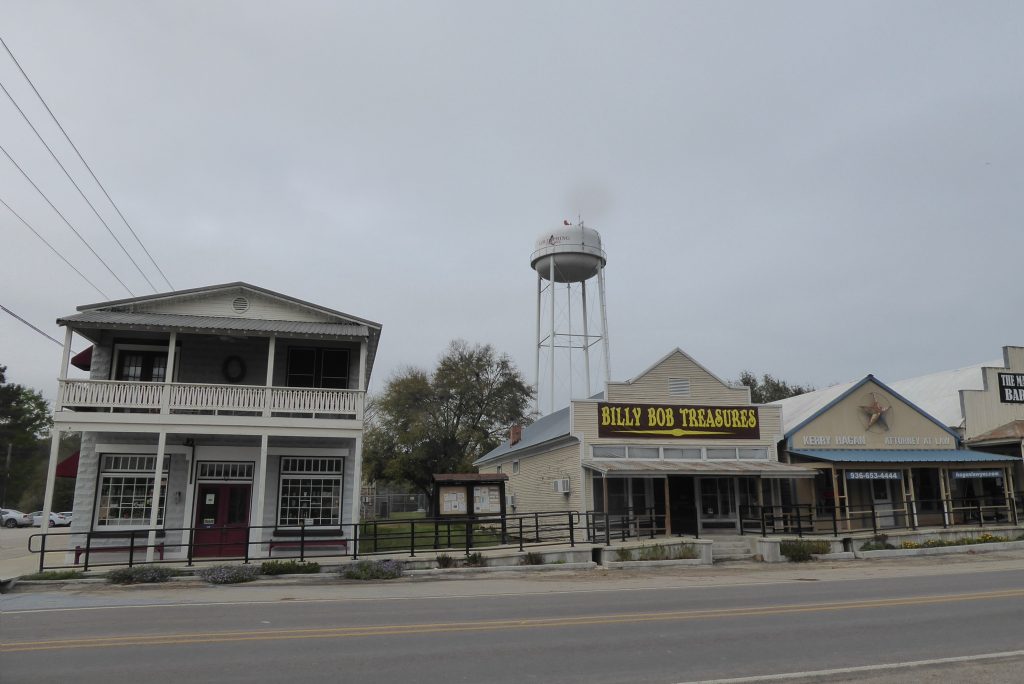
Sadly we ended up back on the strip to find the only accommodation in town – the rather run-down Coldspring Inn complete with non-functioning TV, centuries old bed cover and resident cockroach. But ramen noodles with kidney beans and fresh broccoli made everything right even if I did decide it was safer to sleep on top of the bed rather than I between the covers.
Today’s miles: 63.04
Total miles since Anastasia State Park: 1,128.34

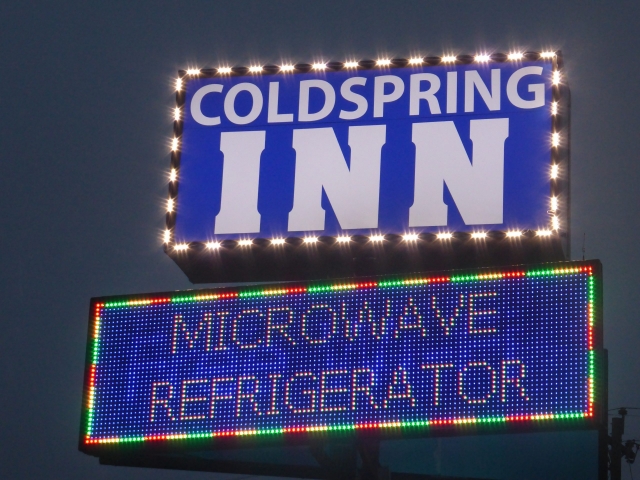
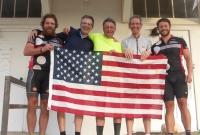
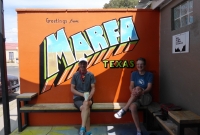
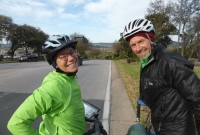




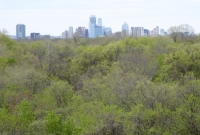

As you cycled through Shepard, Texas, you were about 85 miles south of where I went to Stephen F. Austin State University in Nacogdoches, Texas (1981 – 1985). I spent a lot of time in the Davy Crockett National Forest and Big Thicket areas. While I am sure it is much more civilized now than 35 years ago, you might now have some inclination of why I live 2,250 miles away in the Pacific Northwest… And why I don’t really have any desire to return down that far south. 😉